This is the story of Melbourne’s first electric bus, which doesn’t even operate in Victoria any more.
The story starts in 2019, when Melbourne-based bus body builder Volgren was building a prototype electric bus on an imported BYD K9 chassis.
In July 2019 Volgren completed the prototype of its first ever pure-electric bus, a product launch the company is describing as its most significant since it introduced the Optimus route bus in 2013.
The 12.2-metre vehicle is built on a BYD K9 electric bus chassis and features 324-kilowatt hours of battery capacity. It’s capable of travelling up to 300 kilometres on a single charge and will carry a total of 61 passengers; 39 seats and 22 standees, the company states.
Volgren has been investigating electric technology for more than five years and the prototype alone has involved 12 months of planning, research and engineering problem-solving, as well as partnership-building and discussion with BYD – not to mention the build itself.
There is a great deal of pride at Volgren that its first pure-electric vehicle body was not a brand new design, but a modified Optimus.
That’s not to say, however, that this project was merely a matter of Volgren placing its flagship product over BYD’s and getting the wiring right. Kearney explains that the electric vehicle body Volgren developed required a number of new parts, among them “…new moulded solutions for interior finish and fitout”, as well as “…the introduction of a roof-treatment package designed to better integrate the roof-mounted EV equipment into the vehicle”.
To understand how Volgren ensured these components – and the bus as a whole – worked precisely as it needed to, it’s best to go back to 2018.
“We began with some feasibility studies and reviews in early 2018, assessing the product layout, compliance with Australian Design Rules and other regulations, suitability for Australian customer specification and developing a preliminary understanding of the high-voltage systems and their integration,” Kearney said.
In June of that year the company sent two design engineers to China to attend ‘familiarisation training’ with BYD.
“This process also included a review of issues elicited through the feasibility study and the provision of design and product information from BYD to enable commencement of detailed design.”
Kearney says that for assistance with development of the aesthetic roof treatment they turned to Monash University’s Mobility Design Lab. It was a partnership Volgren knew it could count on, having worked with Monash University in the development of the Optimus Route Bus body earlier this decade.
A few months later the Victorian Government announcing an electric bus trial in conjunction with bus operator Transdev Melbourne.
Victoria’s first locally built, fully electric bus will soon begin carrying passengers on one of Melbourne’s busiest routes, thanks to a partnership between the Andrews Labor Government and Transdev.
The bus will run on Route 246 between Elsternwick and Clifton Hill via St Kilda before potentially being used across other inner Melbourne routes.
The body construction and fit out for the new bus was carried out in Dandenong by Volgren, supporting Victorian jobs and backing the local automotive industry to develop new capability and innovation.
The new zero-emission bus is fitted with 324 kWH of Lithium Phosphate batteries providing 300 kilometers of travel range.
The bus will be based at Transdev’s North Fitzroy depot where a charging station has been installed.
The trial will continue until January 2021 and will be reviewed to determine the potential to roll out fully electric buses across Victoria.
However the trial was the idea of Transdev Australasia and not the Victorian Government, as part of what they called ‘Project Aurora‘
The seeds for the company’s zero-emissions ambitions ‘Down Under’ were sown in 2019, following a phone call with Transdev Australasia’s chief engineer Marc Cleave and Volgren Australia.
Dandenong-based Volgren had recently commenced manufacture of its BYD-chassis prototype electric bus – a modified version of its popular Optimus model. For Transdev and Marc Cleave, now somewhat a veteran of the bus manufacturing scene, the call helped to ignite a vision for a zero-emissions fleet in Australia and New Zealand, helping to kick-start internal ‘Project Aurora’.
Transdev had pioneered zero-emissions electric and hydrogen fleets internationally, it says, but usage in the Australian and New Zealand market was still in relative infancy. From our international learnings we knew the value that zero emissions vehicles could add to our local fleets and contracts, which is why we acted quickly in developing Project Aurora.”
Armed with insights about what worked, Transdev quickly set about gathering a group of locally based suppliers to help realise the vision and bring the company’s first electric bus – ‘Aurora 1’ – to Melbourne in November, 2019.
Under Project Aurora, Transdev took delivery of its first new Volgren BYD Optimus electric bus and BYD charging infrastructure in November, 2019, with the bus going into service on Melbourne’s streets in December of that year, as part of a trial with Victoria’s Department of Transport.
The remaining four vehicles rolled off Volgren’s Dandenong production line in March, 2021, with one commencing service in Brisbane in April and three going into service in Sydney in May. Gala events were held in Dandenong, Brisbane and Sydney, with local authorities, stakeholders and industry to celebrate the launch of the new fleet.
Tessari says the commissioning of the Transdev fleet as part of Project Aurora was significant for the company.
Transdev Australasia funded three of the five vehicles delivered under Project Aurora. Transport for NSW directly funded two vehicles for Sydney, which Transdev procured on its behalf.
“We wanted to demonstrate zero-emissions technology by investing our own cash in it. It’s here now, and it’s the future now that we want to promote to government and show that public transport can be decarbonised,” Craig added.
The trial bus was given fleet number #3000 and registration plate BS05MR, with the first stage of the trial program commencing in December 2019 on route 246, followed by stage two in October 2020 on route 250, and stage three in May 2021 on route 903.
November 2021 also saw the electric bus receive special ‘Ride with Pride’ decals on the side.
But then bad news for Transdev Melbourne – in October 2021 it was announced that their bid for an extension of their Melbourne Bus Franchise contract had failed, and that a new operator would take over – Kinetic, parent company of Melbourne’s SkyBus service.
As a result, once the electric bus trial ended in October 2021, Transdev Melbourne withdrew the bus from their fleet, and sent up to Transdev NSW to join their fleet of four other electric buses operating in Sydney.
Video by NSW Transport on YouTube
Where it also lived a short life, being withdrawn from service in July 2023 and placed into storage.
The only consolation prize for Melbourne – Transdev’s successor Kinetic has to introduce 36 electric buses to their fleet by mid-2025.
Transit Systems in Melbourne’s west also purchasing electric buses.
Along with Sunbury Bus Service.
Ventura in Melbourne’s east.
And Mitchell Transit in Seymour.
But not much of an improvement over the massive order for 50 hybrid buses CDC Melbourne made back in 2019.
Footnote: the gory details
History of Transdev’s trial electric bus #3000 from Australian Bus Fleet Lists:
Chassis Type:
BYD D9RAChassis No:
LC04S44S4J1000003Body Manufacturer:
Volgren OptimusBody No:
VG4899Body Date:
9/19Registered BS05MR:
16/12/2021Transferred to Transdev NSW, and registered as m/o 8190:
24/04/2022Withdrawn by 29/7/23 and placed in storage
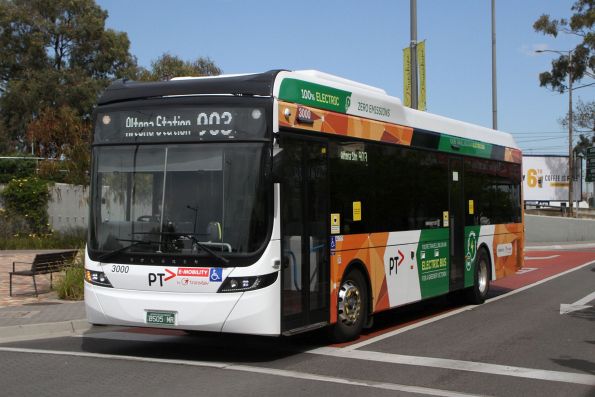
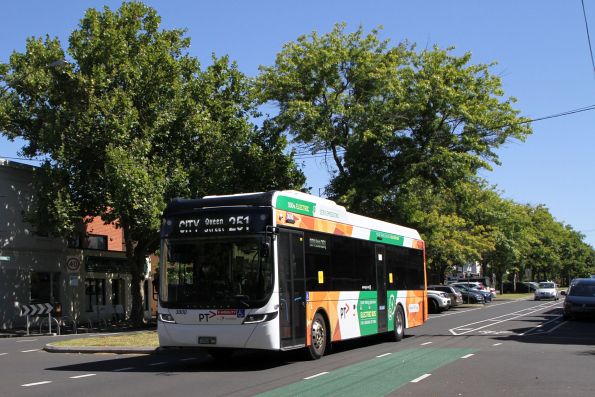
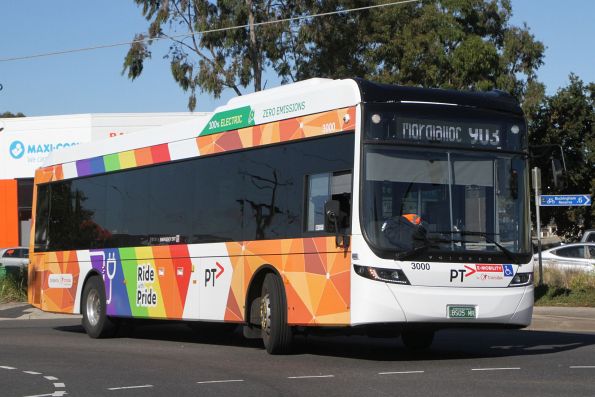
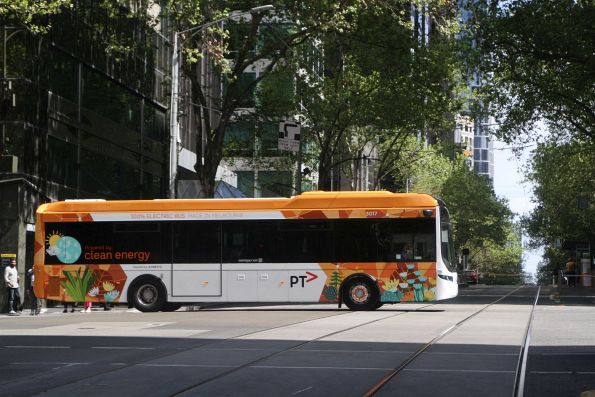
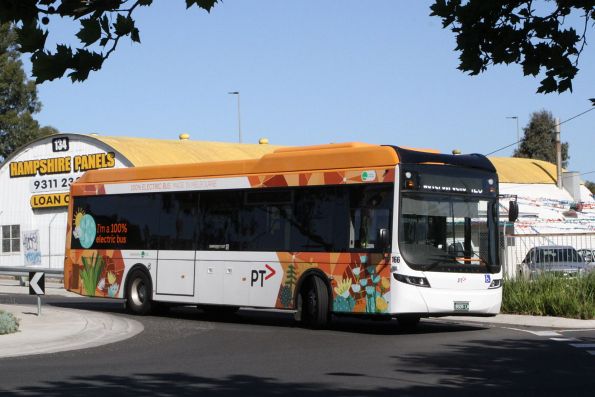
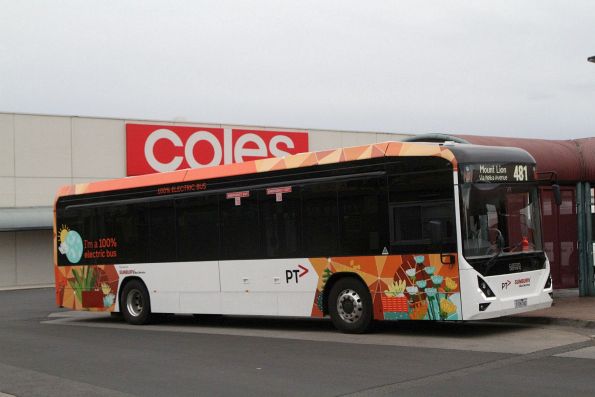
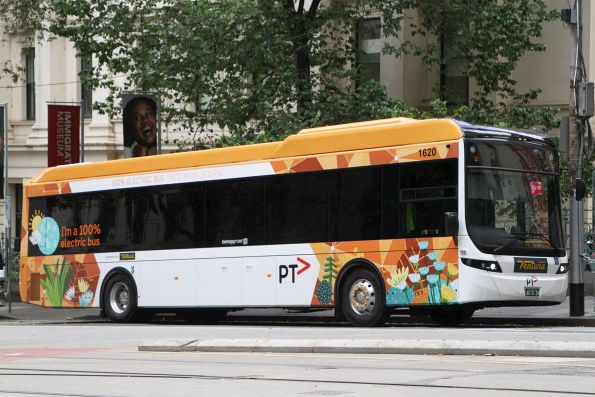
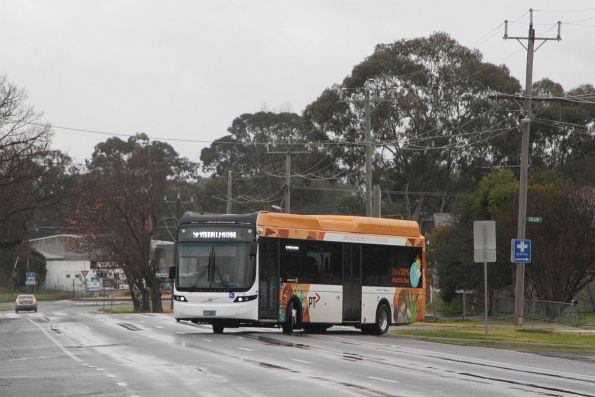
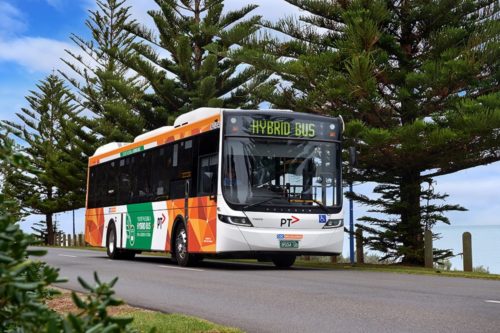

I don’t know much about buses but I do like the quiet and smooth buses on routes 603/604. I was once on a 605 that started off off on silently on I guess battery power and at about 15 km/h the engine started up.
A very interesting read, thanks.
The hybrid buses used by Kinetics have semi-automatic transmission in the diesel stage of transmission, which means the torque output is paused for approximately 1 second during a gear shift. I feel that this could be dangerous if the gear shift happens on a bend when the change in traction could alter the dynamic gravitational centre.
The bus is now with Transdev Queensland (XB20EG).
Checking the registration XB20EG comes up as a “2021 VG5214” bus, VIN LC04S44S8L0000112 – Transdev Australia demonstrator m/o 8188 from Sydney.
https://fleetlists.busaustralia.com/indbusdata.php?requesttype=rego&reqtype=XB20EG
You’re right. Ex-3000 was mo8190, not mo8188. My mistake.
The bus is now XB65KF (Queensland), though I do not know which operator. I assume Transdev Queensland has it.
WoW
The electric buses used in Sunbury are excellent. Very smooth acceleration and stopping. Very quiet cabin and great for the environment…no more carbon fumes in the atmosphere. Besides they look great. Should be more of them
To those who are commenting on the hybrid buses, I believe that the hybrids are with CDC Melbourne not Kinetic (which is one of several operators that has the electric buses).
Kinetic received their first hybrid buses in 2023, with a total of 127 to be delivered.
https://www.ptv.vic.gov.au/footer/about-ptv/improvements-and-projects/bus-and-coach/zero-emission-buses/
They’re on a Scania chassis, numbered in the #4000 series, and currently used on the 900-series orbital routes.
Probably gone under the radar for me, as I was only familiar with CDC Melbourne and not the hybrids that are with Kinetic. Stand corrected.
Stand corrected. I was actually on one of Kinetic’s hybrids on Route 901 a couple of weeks ago from Gladstone Park to Melbourne Airport (I was doing a first aid course in Aintree, not far from the bus stop).
I don’t believe anybody should be standing on a bus.
Safety first.
It’s interesting to see how slow the rollout of electric buses has been in Australia. I’m Australian but I live in Santiago, Chile. The government here over the last 5 years has overseen a huge rollout of fully electric buses. There are now well over 2000 in service here, mostly in the capital, but there are some in the regions. They are all imported fully-built direct from China, mostly BYD.
There are a few differences between Australia and Chile worth taking into account though. One is that the existing bus fleet contains many Diesel buses that are very old, with little to no emissions controls, so there is a lot of fleet renovation that is required anyway.
Secondly, Chile’s power grid has a higher number of renewables than Australia, with hydro the main renewable source, but solar and wind are growing rapidly as well. Coal only makes up around 15 percent of capacity, and this is steadily declining. Gas makes up another 15 percent approx, as does Diesel, which is often still used in remote areas not connected to the national grid.
Lastly, although there are private companies operating the buses, the central government makes all buying decisions, and then supplies those vehicles to the operators. So it makes sense to order hundreds at a time, instead of a few dozen.
What’s going on
All electric buses need to be introduced rather than hybrid.Can we research overseas ? Not a fan of petrochemical based fuels
A few times I have caught the 901 it was hybrid Scania. First time I thought it had stalled until it moved off without the engine running.
Seem to use small batteries (18.5kWh) at very high C rates (120kW recharge, 200kW discharge, poor battery) per the spec sheet https://www.scania.com/content/dam/scanianoe/market/au/products-and-services/buses-and-coaches/spec-sheets/SCA0717-City-Bus-UB4X2-K-Series-spec-sheet_SAU2020-09-KSeries_4x2-v2.pdf
Not sure the arterial routes of the 901 suits this hybrid well as the engine would restart every time the bus moved off, the acceleration to 70 or 80kph being a demanding task.
I like the electric busses. They ride almost like trams, and have an interesting sound at high-speed, otherwise dead silent at low speed.